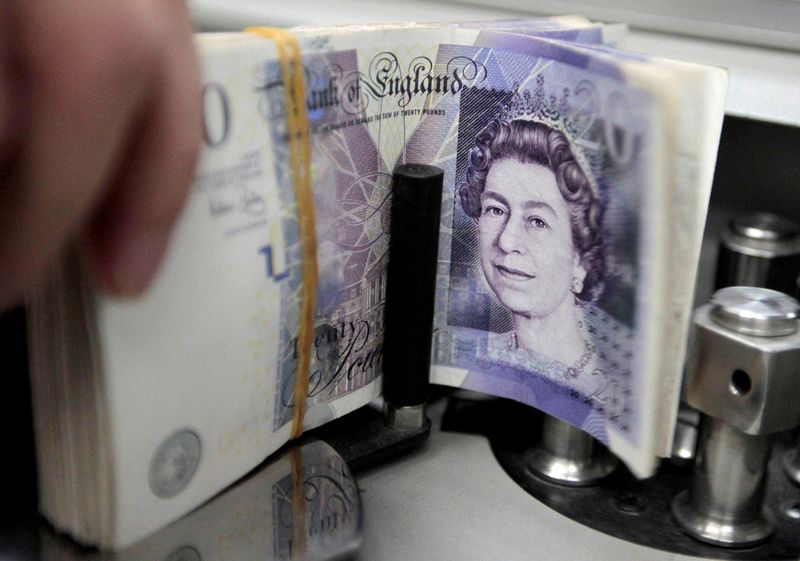LONDON (Reuters) - The pound held near three-month lows on Tuesday, ahead of a slew of central bank decisions, including that of the Bank of England later this week, which is expected to yield a final rate rise in the current cycle.
Sterling was last unchanged on the day against the dollar at $1.2382, just above Monday's session trough of $1.2371, its weakest since early June, and flat against the euro at 86.36 pence.
The BoE meets on Thursday and money markets show traders widely expect to see one final quarter-point hike to 5.50%, but no realistic prospect of a rate cut until next summer.
Inflation has fallen to 6.8% from a 41-year peak of 11.1% last October, but it is still the highest among major economies and progress in bringing it down has been far slower.
Consumer inflation in the United States has fallen to 3.7% from last June's 9.1% rate, while in the euro zone, inflation is running at 5.3%, almost half last October's 10.7% reading.
UK growth, meanwhile, is slowing more than most economists expected, after strikes in hospitals and schools and unusually wet weather weighed on output in July.
Against that backdrop, a Reuters poll of economists last week showed a significant minority believe the BoE has room to raise rates at least once more this year after September.
However, expectations for the BoE have softened in the past few weeks. Back in June, money markets showed traders believed UK rates could hit 6% by the middle of 2024, as the central bank was forced to keep tightening monetary policy to tackle inflation.

"With the BoE market pricing now more reasonable, and sterling positioning still long, we think it will be harder for GBP to stage fresh rallies in the near term. In fact, we see downside sterling risks versus the dollar and some of the commodity G10 currencies (Aussie dollar, Norwegian crown, Canadian dollar) primarily on growth reasons," strategists at Bank of America (NYSE:BAC) said.
As such, speculators have cut back some of their bullish exposure to the pound, but only modestly. The most recent weekly data from the U.S. regulator shows speculators hold a long position worth $3.6 billion, which is the smallest in almost two months, but which is also only marginally below July's nine-year high of $5.34 billion.